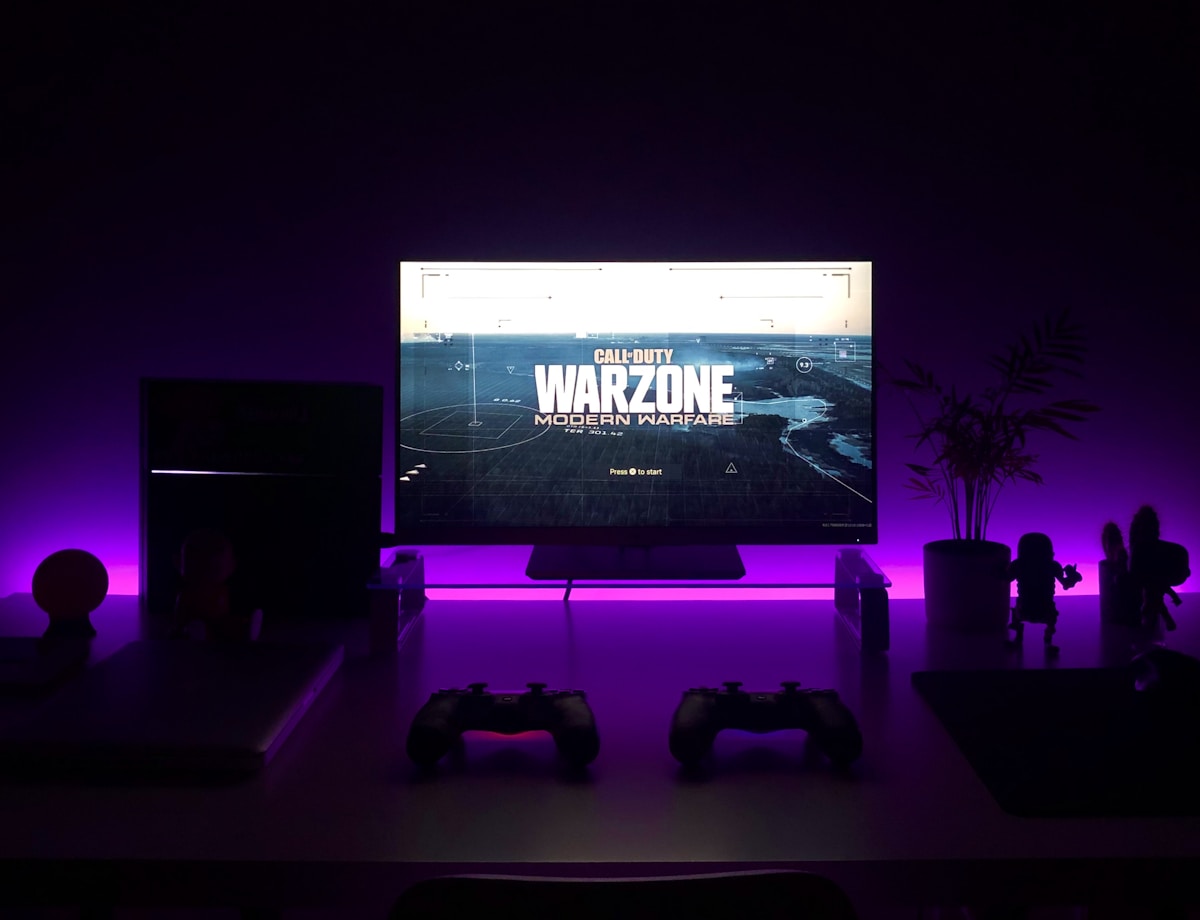Microsoft just released the October 2025 Xbox Game Development Kit update, and buried in the technical documentation is the clearest picture yet of what the next Xbox console will actually be. Spoiler alert: it’s basically a gaming PC that happens to have an Xbox interface. The new developer tools unify PC and console development to an unprecedented degree, with features like cross-platform saves between Steam and Xbox, unified keyboard and mouse support, and packaging tools that treat Xbox and Windows as the same platform.
This isn’t speculation anymore. The GDK update includes four major features explicitly designed to prepare developers for a future where the line between Xbox console and Windows PC essentially disappears. Combined with recent statements from Xbox president Sarah Bond about the next-gen console being a premium hybrid experience, the writing is on the wall. The next Xbox, expected to launch in 2027, will be Microsoft’s boldest hardware experiment yet.
The Four Game-Changing Features
GameInput API
The GameInput API is Microsoft’s solution to one of PC gaming’s most annoying problems: inconsistent input handling. This new unified system brings keyboard, mouse, gamepad, and custom controllers under a single modern framework designed for low latency and thread safety on both Xbox and Windows.
What makes this significant for the next Xbox is that it explicitly improves keyboard and mouse support on console hardware. Current Xbox Series X and S support keyboards and mice for certain games, but it’s always felt like an afterthought. GameInput suggests that mouse and keyboard will be first-class citizens on the next console, treated with the same priority as controllers.
For developers, this means writing input code once and having it work identically across Xbox consoles and Windows PCs. No more separate codebases for handling controller input on console versus keyboard input on PC. It’s all unified, scalable, and ready for a future where players might switch between controller and mouse mid-game depending on what they’re doing.
PlayFab Game Saves
Here’s where things get really interesting. PlayFab Game Saves enables automatic cross-progression between Xbox and Steam, with more platforms coming soon. Players can start a game on Xbox, continue on their gaming PC through Steam, and pick up exactly where they left off without any manual save transfers.
The system handles synchronization and conflict resolution automatically, works offline, and is available to developers through PlayFab Game Manager. This was previously in preview but has now launched as a full feature with the October 2025 update.
The implications are enormous. If you buy a game on Steam, you could theoretically play it on your Xbox console with your save syncing seamlessly. If the next Xbox really does support Steam and other PC storefronts as rumors suggest, PlayFab Game Saves would be the infrastructure making that possible.
Xbox Game Package Manager
The unified packaging tool is all about making it effortless for developers to release games that work identically on Xbox and Windows. Instead of creating separate builds with different packaging formats, developers can now use a single desktop application to build XVC or MSIXVC packages from loose files and upload through browser-based authentication.
This streamlines the Xbox Play Anywhere program, where buying a game digitally gives you access on both Xbox and PC. Previously, developers had to navigate multiple steps with various potential failure points. The new unified interface reduces complexity and makes cross-platform releases the path of least resistance rather than an extra burden.
Cross-Platform Gaming Runtime
The social features update allows developers to integrate Xbox’s social systems for players on other platforms. This means friends lists, parties, achievements, and other Xbox Live features could theoretically work for games purchased through Steam, Epic, or other storefronts when played on Xbox hardware.
It’s another piece of the puzzle showing Microsoft’s vision for the next Xbox as a universal gaming hub rather than a walled garden. Instead of forcing everything through Xbox’s ecosystem, they’re making Xbox features available regardless of where you bought the game.
What the Next Xbox Actually Is
Putting all these pieces together paints a clear picture. The next Xbox, internally codenamed Magnus according to leaks, will essentially be a gaming PC optimized for living room use. It will run a full version of Windows with a console-style interface layered on top that players can choose to never leave if they want that traditional Xbox experience.
But for those who want more, they’ll be able to exit to Windows and access Steam, Epic Games Store, Battle.net, GOG, and any other PC gaming platform. This means PlayStation exclusives that have been ported to PC like God of War, Ghost of Tsushima, and Spider-Man could theoretically be played on an Xbox console by purchasing them through Steam.
The hardware is being developed in partnership with AMD, using cutting-edge RDNA and Zen technologies that rival high-end gaming PCs. Sarah Bond has described it as a very premium, very high-end curated experience, which aligns with rumors suggesting a price point between $1,000 and $1,500.
The ROG Xbox Ally Connection
The $1,000 ROG Xbox Ally X handheld that launched recently is essentially a preview of this strategy. It’s an Asus-built Windows 11 gaming handheld that runs the Xbox Full Screen Experience, giving players a console-like interface with access to Game Pass while still being a fully functional Windows PC underneath.
Microsoft has explicitly said the Ally is a test bed for figuring out what aspects of Windows need improvement for gaming scenarios. The company has already delivered updates that allow apps like Xbox and Steam to launch in full-screen mode from login, disabling the desktop environment to boost gaming performance.
These improvements aren’t just for handhelds. They’re laying the groundwork for a living room console that feels like an Xbox but has the power and flexibility of a Windows gaming PC when you need it.
Developer Benefits and Challenges
For game developers, this unified approach has massive benefits. Instead of treating Xbox and PC as separate platforms requiring different builds, teams can develop once and deploy everywhere with minimal extra work. The GDK tools handle the heavy lifting of making games scale properly across different hardware configurations.
The PlayFab Unified SDK, now bundled with the GDK as a single modular package, replaces multiple SDKs with consistent APIs, automatic token refresh, and modern threading. Developers integrate only what they need, reducing complexity and certification risk.
But there are challenges too. Supporting keyboard and mouse as first-class inputs changes game design considerations. Cross-platform progression requires robust backend systems. Opening Xbox hardware to multiple storefronts complicates Microsoft’s business model, especially around Game Pass subscriptions and revenue sharing.
Microsoft is betting that the benefits outweigh these complications. By positioning Xbox as the premier destination for playing any game regardless of where you bought it, they’re trying to win on user experience and hardware quality rather than exclusive games and ecosystem lock-in.
The Death of Console Wars
This strategy effectively represents Microsoft conceding the traditional console war. Xbox Series X and S have sold an estimated 28 million units worldwide as of June 2024, compared to over 60 million PlayStation 5 consoles. Rather than competing directly with Sony on exclusive games and install base, Microsoft is pivoting to a different model entirely.
The next Xbox won’t try to be the only gaming device you own. It will try to be the best gaming device you own for playing games from anywhere. If you have a massive Steam library, bring it. If PlayStation ports interest you, buy them on PC storefronts and play on Xbox hardware. If you want Game Pass, it’s right there too.
This is either brilliant or catastrophic depending on execution. If Microsoft can deliver a $1,000-$1,500 console that genuinely combines the best of PC and console gaming without the worst aspects of either, it could redefine what premium gaming hardware looks like. If it ends up being an overpriced, confusing hybrid that satisfies neither PC nor console audiences, it will be a spectacular failure.
Timeline and Expectations
Current reports place the next Xbox’s release in 2027. That’s still over a year away, giving Microsoft time to refine the hardware, finalize partnerships with storefront operators, and prepare developers for the transition. The October 2025 GDK update is part of that preparation, giving developers the tools now so their games are ready when the hardware launches.
Microsoft has confirmed the console will support the entire Xbox library going back to the original Xbox through backward compatibility. The partnership with AMD ensures cutting-edge performance. Sarah Bond has promised next-level performance, cutting-edge graphics, breakthrough gameplay, and unmatched compatibility.
Whether all those promises pan out remains to be seen. But the October GDK update makes one thing crystal clear: Microsoft is fully committed to this PC-console hybrid vision. This isn’t a side experiment or a distant possibility. This is the actual plan for Xbox’s next generation.
FAQs
What is the October 2025 Xbox GDK update?
The Game Development Kit update includes four major features: GameInput API for unified input handling, PlayFab Game Saves for cross-platform progression, Xbox Game Package Manager for unified packaging, and Cross-Platform Gaming Runtime for social features across storefronts.
When will the next Xbox release?
The next-generation Xbox console is expected to launch in 2027. Microsoft has confirmed development is underway with AMD as the chip partner, but no official release date has been announced.
Will the next Xbox run Windows?
Yes, according to reports from Windows Central citing trusted sources. The console will run full Windows with a console-style interface layered on top, giving players the option to access the underlying OS for PC gaming storefronts.
How much will the next Xbox cost?
Xbox president Sarah Bond described it as a very premium, very high-end experience. Analysts estimate the price could range from $1,000 to $1,500 depending on configuration, though Microsoft hasn’t confirmed pricing.
Can I play Steam games on the next Xbox?
Reports suggest the console will support multiple PC gaming storefronts including Steam, Epic Games Store, Battle.net, and GOG, in addition to the Xbox ecosystem. This has not been officially confirmed by Microsoft.
Will my Xbox games work on the next console?
Yes, Microsoft has confirmed full backward compatibility with the entire Xbox library. The October GDK update includes tools to ensure games scale properly to the new hardware.
What is the ROG Xbox Ally?
The ROG Xbox Ally is a $1,000 Windows 11 gaming handheld made by Asus in partnership with Microsoft. It features the Xbox Full Screen Experience and serves as a test bed for Microsoft’s hybrid PC-console strategy.
Conclusion
The October 2025 Xbox GDK update isn’t just a routine developer tools release. It’s Microsoft showing their cards about what the next Xbox will be: a premium gaming PC disguised as a console, with the flexibility to access any game from any storefront while maintaining the simplicity and polish of a traditional console experience for those who want it.
The unified development tools, cross-platform saves, keyboard and mouse support, and social features all point toward a future where Xbox hardware is platform-agnostic. You’re not buying into a walled garden. You’re buying premium hardware optimized for gaming regardless of where your games come from.
Whether this strategy succeeds depends entirely on execution. The price point will matter. The user experience switching between console and PC modes will matter. Performance will matter. Storefront cooperation will matter. There are a thousand ways this could go wrong.
But if Microsoft pulls it off, they’ll have created something genuinely new in the gaming hardware space. Not a console trying to be a PC, or a PC trying to be a console, but a true hybrid that delivers the best of both worlds. The October GDK update suggests they’re serious about making that vision a reality. Now we just have to wait until 2027 to see if the hardware lives up to the promise.



